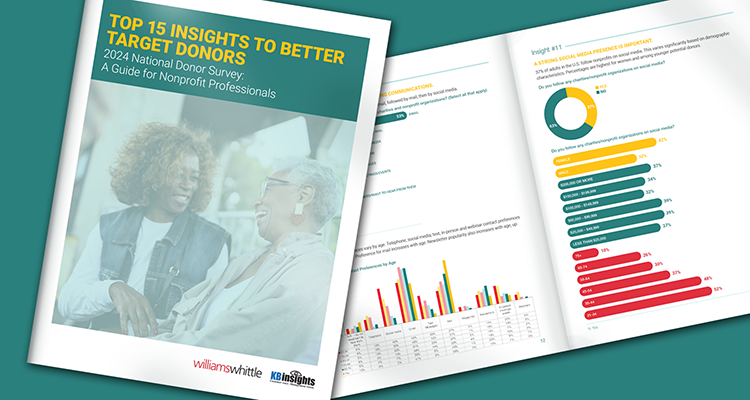The evolving landscape of media and public engagement presents both challenges and opportunities for nonprofits, especially in the aftermath of the COVID-19 pandemic and during the pivotal 2024 election year. Understanding donor behavior is vital to the success of an organization. Insights from Williams Whittle’s 2024 National Donor Survey, conducted in partnership with KB Insights, offers a comprehensive overview of donor tendencies, including giving habits, communication preferences, and the influence of the election on donations. This survey, reflecting a diverse range of individuals, provides a valuable perspective on shifts in donor sentiment over recent years, crucial for shaping effective fundraising and marketing strategies.
Here are the five of 15 insights that can guide nonprofits in navigating the complexities of donor engagement in 2024:
- Election Impact
In the forthcoming Presidential election, 15% of American adults intend to contribute to a candidate’s campaign. Among these potential donors, those with higher incomes show greater inclination, with over a fifth of households earning at least $150,000 annually planning to donate.
- Mission-Driven Giving
As in previous years, the majority of respondents reaffirm that the mission serves as the cornerstone of their decision to donate. Specifically, 55% of respondents emphasized the significance of believing in the organization’s mission, followed closely by the desire to contribute to the community (44%) and a personal connection to the cause (43%).
- Impact of Individual Success Stories
Narratives highlighting individual successes resulting from donations have a lasting impact. Approximately one-third of respondents expressed a preference for stories featuring individuals who directly benefited from the charity or nonprofit. About a quarter found group stories most compelling. Notably, statistics proved to be more engaging than visual aids such as charts, graphs, and infographics.
- Ongoing Communication Preferences
Donors show a preference for receiving ongoing updates through email, followed by mail, and then by social media.
- Significance of Social Media
A robust social media presence is crucial for engagement. 37% of adults in the U.S. follow nonprofits on social media. This varies significantly based on demographic characteristics. Percentages are highest for women and among younger potential donors.
These insights not only highlight the importance of adapting to changing donor preferences, but also underscore the need for nonprofits to be strategic in their outreach, especially in a financially recovering and politically charged environment. Tailoring fundraising efforts in alignment with these findings can help organizations build stronger relationships with donors, ensuring their missions continue to thrive in 2024 and beyond. Click here to view and download the full report.



